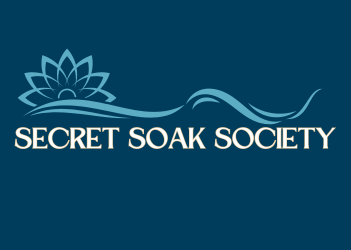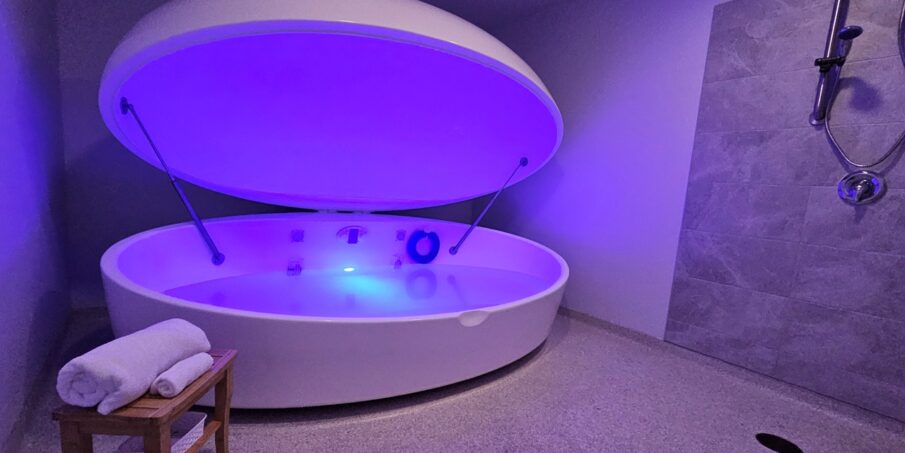When it comes to fitness and athletic performance, one of the most overlooked yet crucial aspects is recovery. Workouts push muscles to their limits, leading to fatigue, soreness, and inflammation. Without proper recovery, progress can slow down, injuries may occur, and performance often suffers. This is where Float Therapy in Post Workout Recovery has gained attention worldwide, including in Australia, as a modern and holistic recovery solution. At Secret Soak Society Australia, athletes, gym-goers, and wellness seekers are embracing float therapy to recharge their bodies and minds effectively.
In this article, we’ll explore what float therapy is, why it’s becoming popular for post-exercise recovery, the science behind it, and how you can benefit from sessions at Secret Soak Society Australia.
What is Float Therapy?
Float therapy, also known as flotation or sensory deprivation therapy, involves lying in a specialized float tank filled with warm water and a high concentration of Epsom salt (magnesium sulfate). The water’s buoyancy makes the body completely weightless, while the tank is designed to minimize sensory input—blocking light, sound, and external distractions. This creates an environment where the body and mind can deeply relax.
For athletes and fitness enthusiasts in Australia, float therapy offers more than just relaxation. It has become a tool for recovery, helping the body heal faster, reducing stress, and restoring balance.
Why Recovery Matters After a Workout
Every workout, whether strength training, running, or high-intensity interval training, creates microscopic tears in muscles. These tears are necessary for growth, but they require healing to rebuild stronger muscles. Recovery also involves reducing lactic acid buildup, replenishing energy stores, and calming the nervous system.
Traditional recovery methods like stretching, massages, and ice baths are useful—but they don’t always provide deep relaxation or target both the mind and body simultaneously. This is where Float Therapy in Post Workout Recovery is transforming how athletes in Australia approach recovery.
The Science Behind Float Therapy for Post Workout Recovery
Float therapy works on multiple levels—physical, mental, and neurological—making it an effective recovery practice. Here’s how:
1. Muscle Relaxation and Pain Relief
The magnesium in Epsom salts is absorbed through the skin, which helps reduce muscle soreness, inflammation, and cramping. Floating weightlessly also removes pressure from joints, tendons, and ligaments, giving the body complete rest.
2. Nervous System Reset
Post-workout, the sympathetic nervous system (responsible for the fight-or-flight response) remains active. Float therapy shifts the body into a parasympathetic state, promoting rest, recovery, and healing.
3. Improved Blood Circulation
The zero-gravity environment improves blood flow, delivering oxygen and nutrients to tired muscles while speeding up the removal of metabolic waste like lactic acid.
4. Mental Recovery
Training isn’t just physical—it also taxes the brain. Float therapy calms the mind, reduces cortisol (stress hormone) levels, and promotes mental clarity, helping athletes regain focus and motivation.
Float Therapy in Post Workout Recovery: Benefits for Athletes
At Secret Soak Society Australia, clients report significant improvements in how their bodies recover after training. The benefits of float therapy include:
Reduced Muscle Soreness
Many athletes experience faster relief from delayed onset muscle soreness (DOMS) after float sessions, allowing them to train consistently without being sidelined by stiffness.
Faster Healing from Injuries
The buoyancy of float tanks reduces physical stress, which is particularly beneficial for those recovering from injuries or undergoing physiotherapy.
Improved Sleep Quality
Better recovery often depends on deep, restorative sleep. Floating promotes melatonin release and supports better sleep cycles, making it easier to rest fully after workouts.
Enhanced Flexibility
With muscles fully relaxed during floating, many people notice improvements in flexibility and range of motion—both crucial for preventing injuries.
Stress and Anxiety Relief
Athletes often face pressure to perform. Float therapy creates a meditative environment that eases anxiety and boosts mental resilience.
Why Athletes in Australia Are Choosing Float Therapy
From professional athletes to casual fitness lovers, float therapy has gained popularity in Australia as a natural, drug-free, and holistic recovery method. Sports clubs, gyms, and physiotherapists increasingly recommend it as part of post-workout routines.
At Secret Soak Society Australia, clients range from marathon runners to yoga enthusiasts who appreciate the personalized approach to recovery. The growing awareness of Float Therapy in Post Workout Recovery shows that Australians are embracing new-age wellness methods to complement traditional sports recovery.
How Float Therapy Complements Other Recovery Methods
Float therapy doesn’t replace other forms of recovery—it enhances them. For example:
- Pairing float sessions with physiotherapy accelerates healing.
- Combining float therapy with proper nutrition optimizes muscle repair.
- Adding float sessions alongside massage provides both surface and deep tissue relaxation.
When integrated into a well-rounded recovery routine, float therapy amplifies results and ensures athletes feel refreshed physically and mentally.
What to Expect in a Float Therapy Session
If you’re new to float therapy, here’s what a typical session looks like at Secret Soak Society Australia:
- You’ll shower before entering the float tank.
- The water is skin-temperature and filled with Epsom salt to allow effortless floating.
- You can choose between total silence or soothing music.
- Sessions usually last 60–90 minutes.
- After floating, most clients report feeling deeply relaxed, with muscle soreness reduced and energy levels restored.
Secret Soak Society Australia: Your Partner in Recovery
Secret Soak Society Australia isn’t just about float tanks—it’s about creating a holistic wellness experience. Their float therapy services are designed specifically to meet the needs of athletes, fitness enthusiasts, and anyone seeking faster recovery. With state-of-the-art float pods, calming environments, and expert staff, Secret Soak Society ensures every client enjoys the full benefits of Float Therapy in Post Workout Recovery.
Is Float Therapy Right for You?
If you regularly engage in physical activity, whether you’re a weightlifter, cyclist, runner, or simply a fitness enthusiast, float therapy can become an essential part of your recovery routine. Australians seeking a balance between high performance and overall wellness will find float therapy a valuable addition to their lifestyle.
Frequently Asked Questions (FAQs)
- How often should I use float therapy for post-workout recovery?
For athletes in intense training, 1–2 sessions per week are ideal. For general fitness enthusiasts, once every 2–3 weeks can be beneficial. - Is float therapy safe for everyone?
Yes, float therapy is safe for most people. However, those with open wounds, infections, or certain medical conditions should consult a doctor before booking a session. - How soon after a workout should I float?
You can float the same day as your workout. Many people schedule sessions within 24 hours of intense exercise to maximize recovery. - Will float therapy replace other recovery methods like massage or physiotherapy?
No, float therapy complements these methods. It provides benefits that enhance but don’t replace other recovery techniques. - Can beginners benefit from float therapy in post workout recovery?
Absolutely! Beginners often find float therapy especially helpful, as it reduces soreness and helps them adapt to new exercise routines without overwhelming fatigue.





